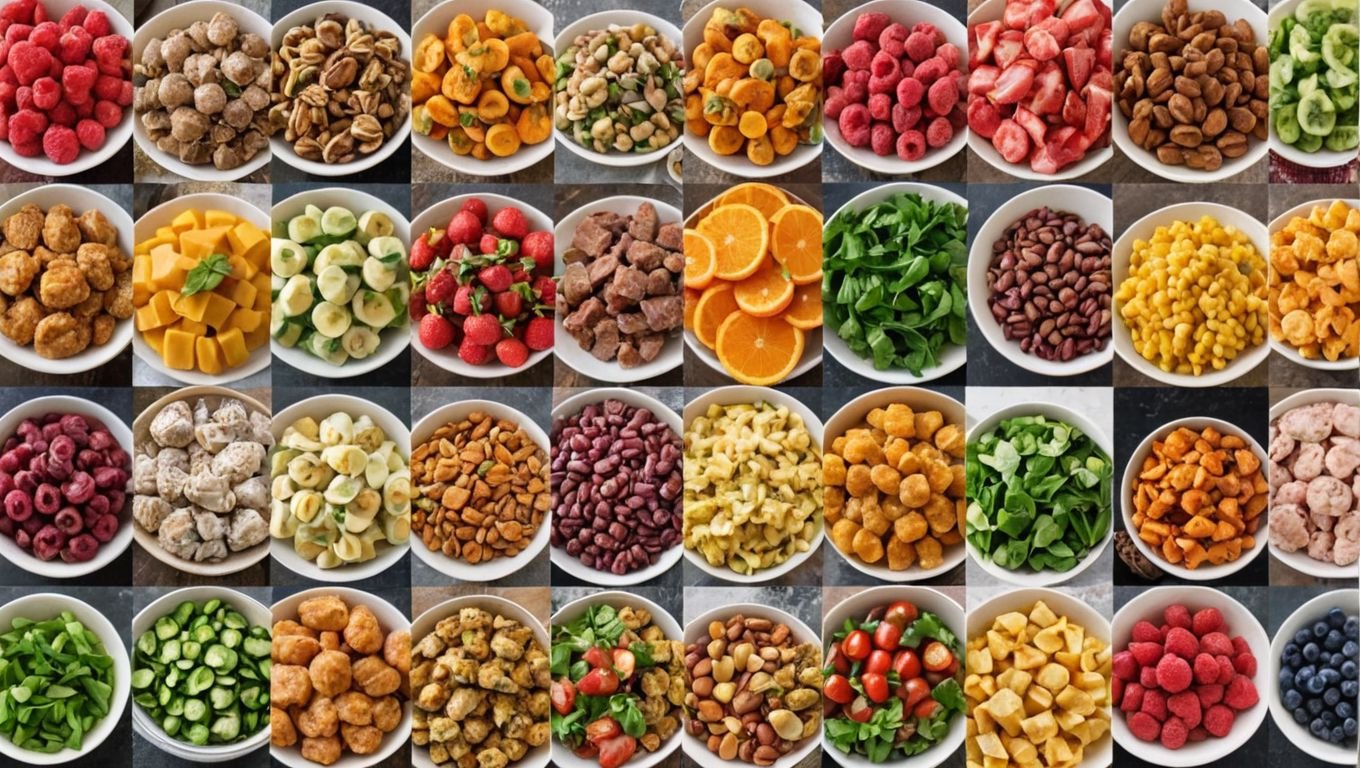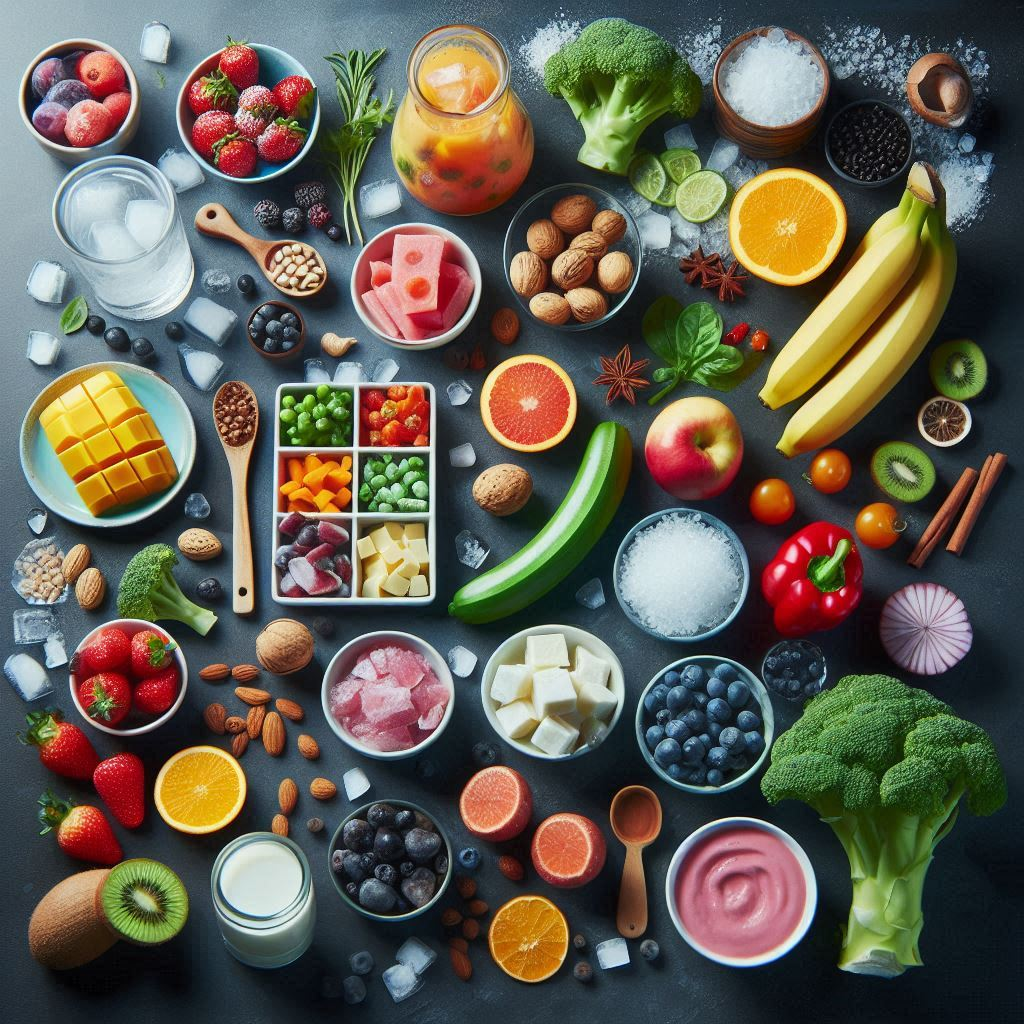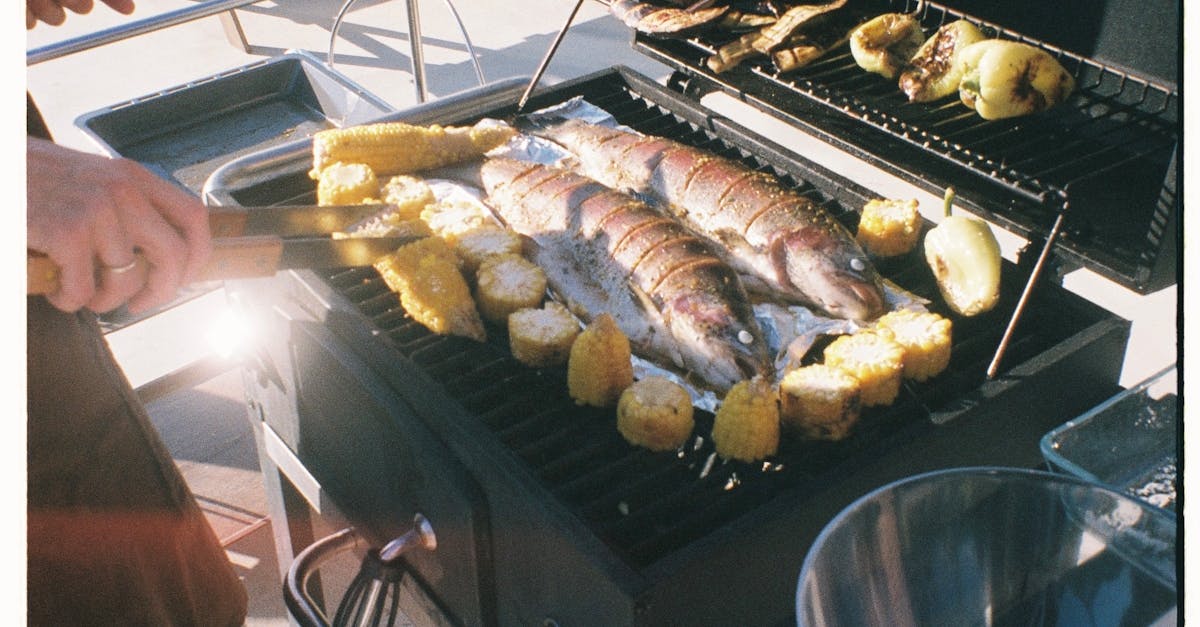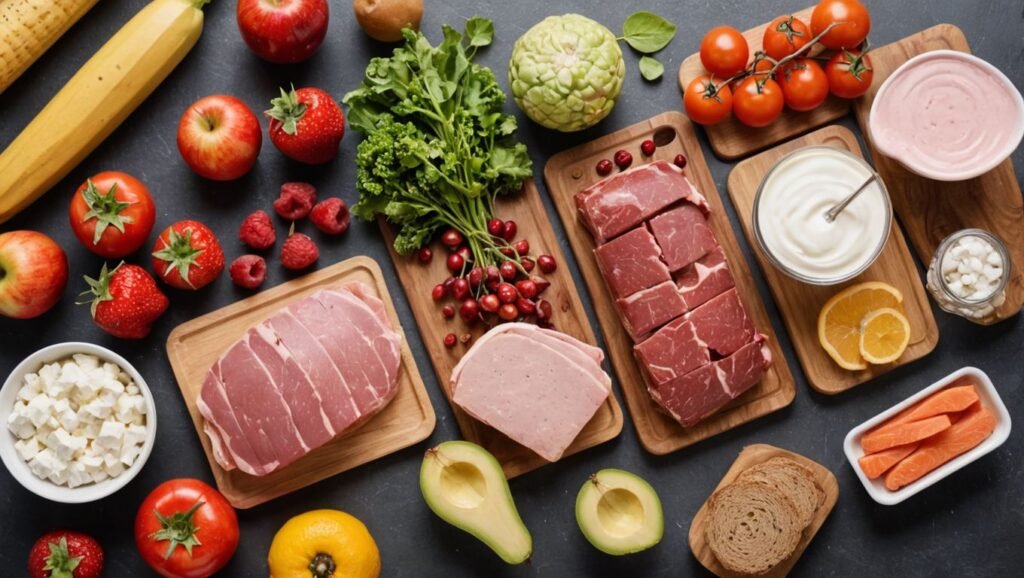
12 Powerful Foods to Freeze for Ultimate Convenience!
Discover 12 powerful foods to freeze for meal prep and convenience, ensuring your culinary efficiency and nutrition. These foods to freeze are perfect for any busy kitchen.

Introduction
In Meal Prep a Breeze

In today’s fast-paced world, meal preparation can often feel like a daunting task. However, by harnessing the power of freezer-friendly foods, you can transform your culinary routine into a seamless and efficient process. These versatile ingredients not only save time but also reduce food waste and ensure you always have a nutritious meal at your fingertips.
Explore the versatility of these foods to freeze and enjoy a variety of meal options without hassle.
Freezer-friendly foods are often overlooked in the kitchen, providing a practical solution for both busy individuals and families. By incorporating these ingredients into your meal prep strategy, you’ll discover a world of convenience without compromising on taste or nutritional value.
When planning meals, consider incorporating these foods to freeze into your weekly menu for added convenience.
This comprehensive guide will delve into the intricacies of freezer-friendly foods, from comprehending their unique qualities to mastering the process of freezing and thawing. Get ready to revolutionize your approach to meal preparation and embrace a more organized, stress-free culinary lifestyle.
Understanding Freezer-Friendly Foods: What Makes Them Special?
These unique foods to freeze are specifically chosen for their ability to retain quality when stored.
Freezer-friendly foods possess unique characteristics that allow them to maintain their quality, texture, and flavor even after extended periods in sub-zero temperatures. These culinary champions are designed to withstand the freezing process without compromising their integrity, making them ideal for long-term storage and convenient meal planning.
Emphasizing the benefits of these foods to freeze lets you enjoy seasonal flavors all year round.
By utilizing these foods to freeze, you can create a diverse meal plan that is both nutritious and delicious.
One of the key factors that make certain foods freezer-friendly is their moisture content. Items with a lower water content tend to freeze better, as they’re less likely to form large ice crystals that can damage cell structures and affect texture. Additionally, foods with a higher fat content often freeze well, as the fat acts as a protective barrier against freezer burn.
Another crucial aspect of freezer-friendly foods is their ability to retain nutrients during the freezing process. Many fruits and vegetables, when frozen at their peak ripeness, can actually preserve more vitamins and minerals than their fresh counterparts that have been sitting on store shelves for days. This makes freezer-friendly foods not only convenient but also a smart choice for maintaining a balanced diet.

Top 12 Foods That Freeze Well for Long-Term Storage
Soups and Stews: These hearty dishes are perfect for freezing, as their liquid base helps prevent freezer burn. Portion them into individual servings for easy reheating.
Casseroles: From lasagna to shepherd’s pie, casseroles freeze beautifully and can be reheated for a quick family meal.
Cooked Grains: Rice, quinoa, and other grains can be frozen in portioned bags, ready to be thawed and added to various dishes.
Freezing these foods can enhance your meal preparation strategies and reduce food waste.
Consider how these foods to freeze can not only save you time but also maintain nutrition.
Berries: Flash-freeze these antioxidant-rich fruits on a baking sheet before transferring to freezer bags for easy smoothie additions.
Lean Meats: Raw or cooked, properly packaged meats can last for months in the freezer without losing quality.
Herbs: Chop fresh herbs and freeze them in ice cube trays with a bit of water or oil for instant flavor boosters.
Bread and Baked Goods: Slice bread before freezing for easy toasting, and wrap baked goods individually for grab-and-go treats.
Sauces and Pestos: Freeze these flavorful additions in small portions to elevate any meal in minutes.
Cooked Beans: Batch-cook beans and freeze them in recipe-sized portions for quick additions to soups and salads.
Mashed Potatoes: Contrary to popular belief, mashed potatoes freeze well when mixed with a bit of cream cheese or sour cream.
Pancakes and Waffles: Make a big batch on the weekend and freeze for easy weekday breakfasts.
For optimal results, be mindful of which foods to freeze and how to prepare them for long-term storage.
Cooked Vegetables: Blanch and freeze vegetables like broccoli, carrots, and green beans for quick side dishes.
Best Practices for Freezing Foods: Tips and Tricks
To ensure your freezer-friendly foods maintain their quality and taste, follow these essential tips and tricks:
Focus on these foods to freeze to streamline your meal prep process effectively.
Choosing the right foods to freeze ensures that your meals remain flavorful and satisfying.
Cool Before Freezing: Allow hot foods to cool completely before freezing to prevent ice crystal formation and maintain texture.
Portion Control: Divide foods into meal-sized portions before freezing for easier thawing and less waste.
Remove Air: Squeeze out as much air as possible from freezer bags to prevent freezer burn and maintain freshness.
Label Everything: Use a permanent marker to label containers with the contents and date of freezing for easy identification.
Use Proper Containers: Opt for freezer-safe containers or heavy-duty freezer bags to protect your food from freezer burn.
By adhering to these best practices, you’ll maximize the longevity and quality of your frozen foods, ensuring delicious meals for weeks or even months to come.
Meal Prep Magic: How to Utilize Frozen Foods Effectively
Incorporating frozen foods into your meal prep routine can significantly streamline your cooking process. Start by planning your meals for the week and identifying which components can be prepared in advance and frozen. For example, you could cook a large batch of ground beef, portion it out, and freeze it for use in tacos, spaghetti sauce, or casseroles throughout the week.
Another effective strategy is to prepare complete meals and freeze them in individual portions. This approach is particularly useful for lunches or busy weeknight dinners. Simply reheat a frozen portion, and you’ll have a homemade meal ready in minutes.
Don’t forget to leverage your frozen fruits and vegetables for quick and nutritious smoothies or side dishes. Keep a variety of frozen produce on hand to add instant color and nutrients to any meal.

The Ultimate Freezer Storage Guide: Organizing for Convenience
Incorporate these foods to freeze into your meal plan for nutritious options at any time.
An organized freezer is key to maximizing the benefits of freezer-friendly foods. Follow these tips to create an efficient freezer storage system:
Use Clear Containers: Opt for transparent containers or bags to easily identify contents at a glance.
These foods to freeze are perfect for anyone looking to save time in the kitchen while still enjoying delicious meals.
Implement a First-In, First-Out System: Place newer items at the back of the freezer and older ones in front to ensure rotation.
Create Zones: Designate specific areas for different food types (e.g., meats, vegetables, prepared meals) for easy location.
Utilize Door Space Wisely: Store frequently used items or those with shorter freezer lives in the door for quick access.
Maintain an Inventory: Keep a running list of your freezer contents to avoid overbuying or forgetting about items.
By implementing these organizational strategies, you’ll transform your freezer into a well-oiled machine, making meal prep and planning a breeze.
Nutritional Benefits: Why Frozen Foods Can Be Healthy Choices
Contrary to popular belief, frozen foods can have the same or even greater nutritional value than their fresh counterparts. When fruits and vegetables are frozen at their peak ripeness, they lock in essential vitamins and minerals that might otherwise degrade during transportation and storage of fresh produce.
Moreover, freezing allows you to enjoy seasonal produce year-round, ensuring a diverse and nutrient-rich diet regardless of the time of year. For example, you can savor antioxidant-packed berries in the middle of winter or enjoy vitamin C-rich peaches in the fall.
Frozen proteins, such as fish and lean meats, also retain their nutritional value when properly frozen. This means you can stock up on high-quality proteins without worrying about them spoiling before you have a chance to use them.
Consider how these foods to freeze can simplify your meal preparation while maximizing taste.
Freezing Fruits and Vegetables: Preserving Freshness and Nutrients
To maximize the nutritional benefits and quality of frozen fruits and vegetables, follow these guidelines:
Choose Peak Ripeness: Select fruits and vegetables at their prime for the best flavor and nutrient content.
Blanch Vegetables: Briefly boil vegetables before freezing to preserve color, texture, and nutrients.
Flash Freeze: Spread fruits or vegetables on a baking sheet and freeze until solid before transferring to freezer bags.
Remove Air: Squeeze out excess air from freezer bags to prevent freezer burn and maintain quality.
Learn how to utilize these foods to freeze in your everyday cooking for seamless meal preparation.
Use Within 6-12 Months: While frozen produce can last indefinitely, aim to use it within a year for optimal flavor and nutrition.
Avoid common pitfalls with these foods to freeze to ensure the best meal prep experience.
By following these steps, you’ll ensure that your frozen fruits and vegetables retain their freshness, flavor, and nutritional value for months to come.
From Freezer to Table: Quick and Convenient Meal Planning Ideas
Leverage your freezer-friendly foods to create quick and delicious meals with minimal effort. Here are some ideas to get you started:
Smoothie Packs: Pre-portion frozen fruits, greens, and yogurt for instant smoothies.
Stir-Fry Kits: Combine frozen vegetables, pre-cooked proteins, and sauce packets for easy stir-fries.
By focusing on these foods to freeze, you’ll enhance both nutrition and convenience.
Utilizing these foods to freeze smartly can elevate your culinary experience significantly.
Embrace these foods to freeze as a vital part of your culinary routine and enjoy effortless meal prep.
Soup Starter Bags: Freeze chopped vegetables and herbs with cooked beans for quick soup bases.
Breakfast Burritos: Prepare and store breakfast burritos for quick morning meals.
Optimize your culinary approach by incorporating these foods to freeze into your kitchen routine.
Remember, freezing these foods can significantly enhance your meal prep efforts.
Marinated Meats: Freeze raw meats in marinades for flavorful, ready-to-cook proteins.
These meal planning ideas demonstrate how freezer-friendly foods can simplify your cooking routine while still providing diverse and tasty options.
Common Mistakes to Avoid When Freezing Foods
To ensure the best results with your freezer-friendly foods, steer clear of these common pitfalls:
With these freezer-friendly foods, you’ll have countless meal options at your disposal.
Freezing Foods Past Their Prime: Only freeze fresh, high-quality ingredients for the best results.
These foods to freeze are essential for anyone looking to enhance their meal prep journey.
Neglecting Proper Packaging: Use appropriate freezer-safe containers and remove excess air to prevent freezer burn.
Overfilling Containers: Leave some headspace in containers to allow for expansion during freezing.
Refreezing Thawed Foods: Avoid refreezing items that have been completely thawed to maintain food safety.
Forgetting to Label: Always label containers with contents and date to avoid confusion and ensure timely use.
By avoiding these mistakes, you’ll maximize the quality and safety of your frozen foods, ensuring delicious meals every time.
Thawing Techniques: Maintaining Food Quality and Safety
Proper thawing is crucial for maintaining the quality and safety of your freezer-friendly foods. Follow these guidelines for optimal results:
Refrigerator Thawing: The safest method, ideal for meats and large items. Plan ahead, as it can take 24-48 hours.
Cold Water Thawing: Submerge sealed food in cold water, changing every 30 minutes. Faster than refrigerator thawing but requires more attention.
Microwave Thawing: Use for small portions that will be cooked immediately after thawing.
Cook from Frozen: Many vegetables and some prepared meals can be cooked directly from frozen, saving time and maintaining quality.
Remember to never thaw food at room temperature, as this can promote bacterial growth and compromise food safety.
Conclusion: Embracing Freezer-Friendly Foods for Effortless Meal Prep
Incorporating freezer-friendly foods into your culinary routine can revolutionize your approach to meal preparation. By mastering the art of freezing, storing, and thawing, you’ll unlock a world of convenience without sacrificing nutrition or flavor.
From time-saving meal components to fully prepared dishes, your freezer becomes an invaluable tool in creating effortless, delicious meals. Embrace the power of freezer-friendly foods and discover how they can transform your kitchen into a hub of efficiency and culinary creativity.
Ready to revolutionize your meal prep routine? Start by stocking your freezer with some of the freezer-friendly foods mentioned in this guide. Experiment with different freezing and thawing techniques, and discover how these versatile ingredients can save you time and effort in the kitchen. Share your favorite freezer-friendly recipes and tips with friends and family, and join the community of savvy home cooks who have embraced the convenience of freezer meal prep!




One Comment
Pingback: